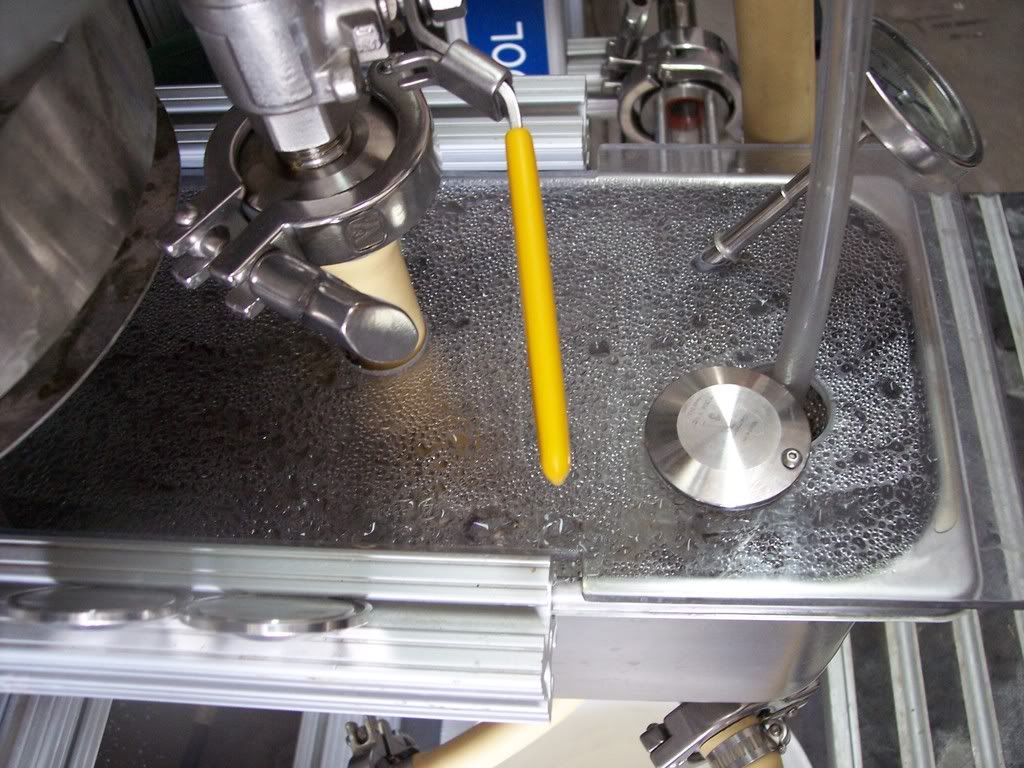I think I understand how a PID controller works, but so far I have only seen examples with one input (the thermistor voltage) and one output (the heater control). That shoud work fine when the flow rate of the wort is constant, but how do you manage it with a grant?
The way I think a grant works is that the mash tun drains into a grant, and a pump draws from the grant pushing through the heating element up to the sparge arm. But if the pumping rate is not the same as the mash tun drain rate, the level in the grant will either underflow or overflow. I guess most pumps will be able to push wort faster than it can drain from the MT, so there would be no problem with grant overflow. But that leaves grant underflow.
Is grant underflow a problem? It seems like the pump would lose its prime if it underflowed. You could prevent underflow with a wort level detector in the grant. When the grant goes below a certain fullness, turn off the pump. But now you have created a problem for the heating element: without wort flowing by, the heater is not cooled at the same rate, and you could end up scorching the wort. And the poor PID will be very confused.
I guess if you could control the pump speed with a PID controller of its own, you could basically keep the grant level pegged and the pump primed. This should result in a constant flow of wort over the heating element, and the heater PID controller would be happy. Is this how people control a RIMS with a grant?
It strikes me as a sub-optimal system because the heater PID controller, downstream of the pump, would not know what the flow rate is, even though the pump PID controller has that information. Is there a single controller which can monitor grant level and thermister voltage and control pump speed and heater voltage simultaneously?
The way I think a grant works is that the mash tun drains into a grant, and a pump draws from the grant pushing through the heating element up to the sparge arm. But if the pumping rate is not the same as the mash tun drain rate, the level in the grant will either underflow or overflow. I guess most pumps will be able to push wort faster than it can drain from the MT, so there would be no problem with grant overflow. But that leaves grant underflow.
Is grant underflow a problem? It seems like the pump would lose its prime if it underflowed. You could prevent underflow with a wort level detector in the grant. When the grant goes below a certain fullness, turn off the pump. But now you have created a problem for the heating element: without wort flowing by, the heater is not cooled at the same rate, and you could end up scorching the wort. And the poor PID will be very confused.
I guess if you could control the pump speed with a PID controller of its own, you could basically keep the grant level pegged and the pump primed. This should result in a constant flow of wort over the heating element, and the heater PID controller would be happy. Is this how people control a RIMS with a grant?
It strikes me as a sub-optimal system because the heater PID controller, downstream of the pump, would not know what the flow rate is, even though the pump PID controller has that information. Is there a single controller which can monitor grant level and thermister voltage and control pump speed and heater voltage simultaneously?



